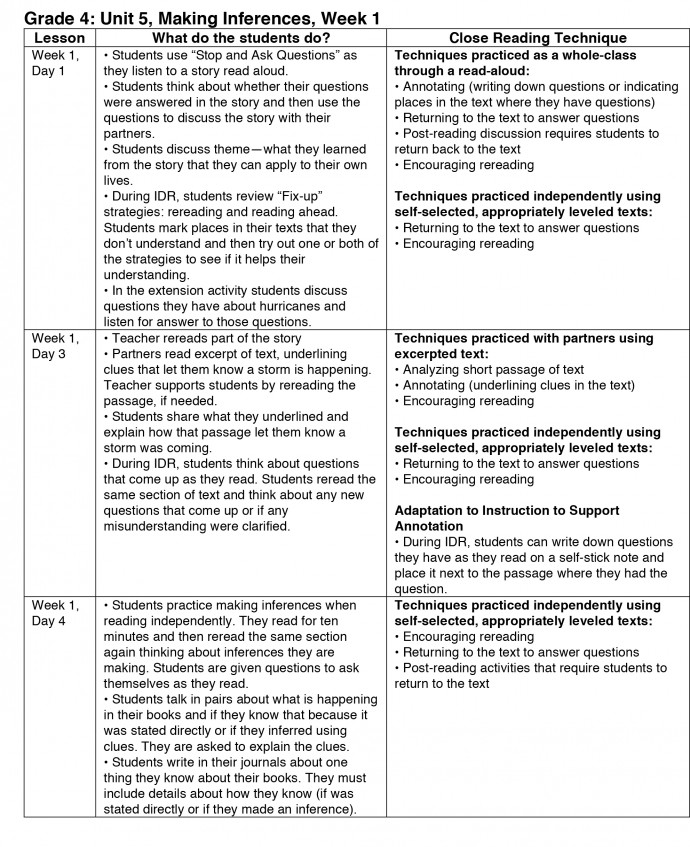In a previous post, I did a little thinking around the article “Close Reading” by Nancy Frey and Douglas Fisher. As a result of that thinking, I tasked myself with reviewing a unit of Making Meaning to identify instruction that either supported the teaching of a close reading technique or to identify places where there might be an opportunity to incorporate a close reading technique. The techniques I kept in mind were those identified by Frey and Fisher:

- Using short, worthy passages of text for instruction
- Encouraging rereading
- Annotating the text
- Returning to the text to answer questions
- Post-reading activities that require students to return to the text
So, with pencil in hand, I read and reread Making Meaning grade 4, Unit 5, Making Inferences. Here’s a summary of what I found in Week 1.

I’m not going to outline the entire unit here, but I found similar support provided in Days 2–4 of Weeks 2 and 3 (it’s a three-week unit).
Summary
This exercise confirmed my belief that the instruction in Making Meaning supports students with learning close reading techniques. Students have opportunities to:
- Analyze short, worthy passages (done during Guided Strategy Practice and Independent Strategy Practice lessons with passages reproduced in the Student Response Book)
- Read and reread excerpts from read-aloud texts and IDR texts for a specific purpose
- Annotate excerpted texts or self-selected texts for specific purposes
- Underline clues that help them make inferences about a character, the setting, or plot of a story
- Think about questions they have about the text as they read and marking those places with self-stick notes
- Think about things that surprised them as they read
- Identify key details in a text and summarizing them
- After-reading tasks such as whole-class discussions, Writing About Reading activities, and Reading Journal entries require students to return to texts for a specific purpose (e.g., comparing two texts, writing about inferences, character change, or questions they have about their texts)
- Additionally, students learn specific questions to ask themselves to help them think about all texts-not just “complex” texts (e.g., self-monitoring questions and questions to think about when making inferences)
In the end, Making Meaning helps students understand that reading is an active process-that readers need to be alert and attentive as they read and they need to ask questions and wonder about what they are reading. I also appreciate that the instruction encourages students to practice close reading techniques not only in short excerpts of text but in self-selected texts that they are reading independently during Individualized Daily Reading.
I’d be interested in others doing a close read of a Making Meaning unit and seeing what they come up with. How does the instruction in these lessons support instruction around close reading? In what ways are the students practicing close reading techniques? How might these techniques be used across content areas?
